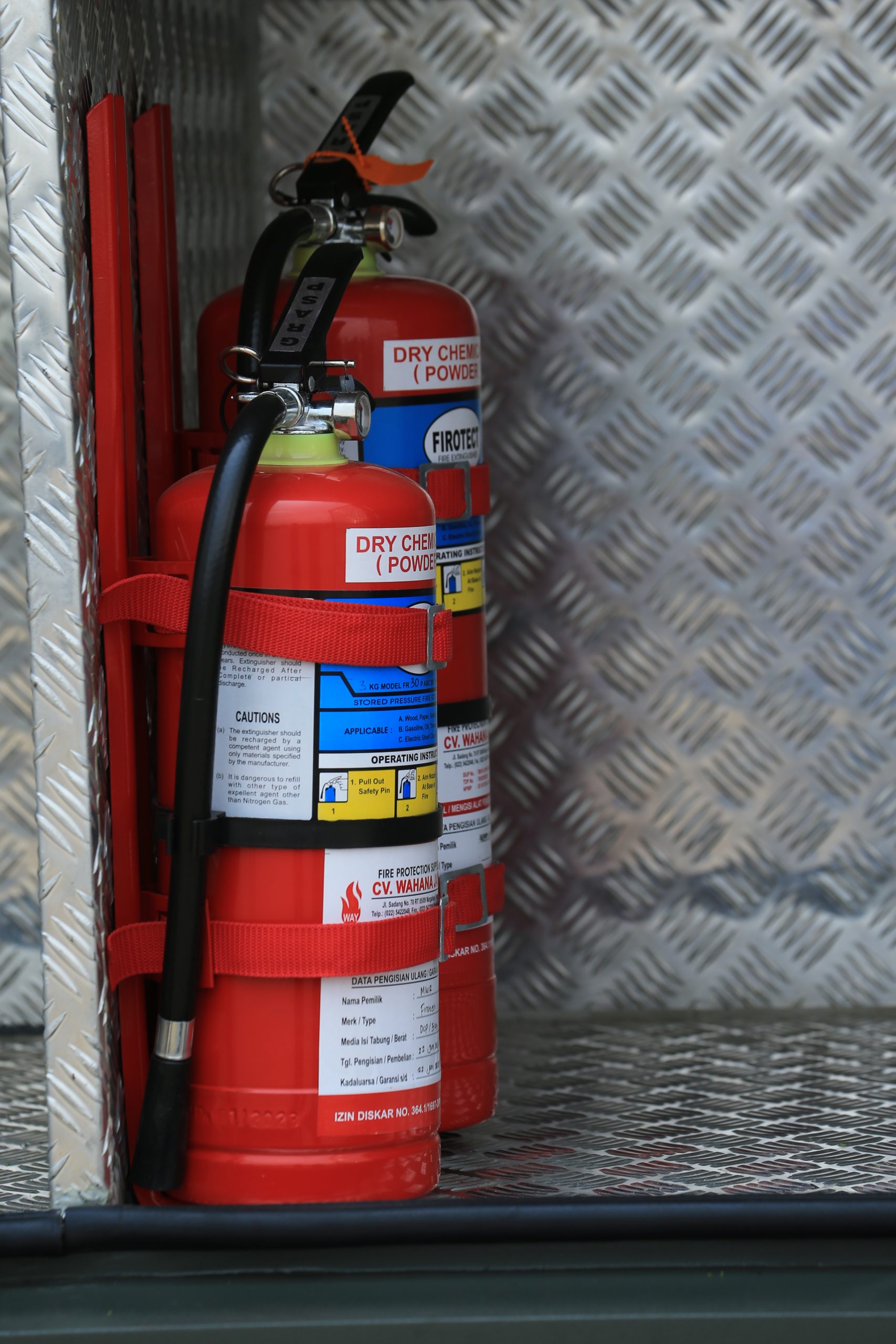In this article, we will provide you with a comprehensive overview of health and safety regulations from a legal perspective. Whether you are a business owner or a high net worth individual, understanding these regulations is crucial to ensure the safety of your employees and the protection of your assets. We will address common concerns and provide guidance on navigating the complex world of health and safety laws. Our goal is to equip you with the knowledge you need to make informed decisions and comply with the necessary legal requirements. So, let’s dive into this legal overview and explore the key aspects of health and safety regulations together. By the end of this article, you will have a solid foundation to effectively manage health and safety in your organization.
The Importance of Health and Safety Regulations
As an employer, it is your responsibility to ensure the health and safety of your employees. This not only protects their well-being but also contributes to a positive work environment and minimizes legal liability. Implementing effective health and safety regulations is crucial for every business, regardless of its size or industry.
Protecting Employee Welfare
One of the main reasons for having health and safety regulations in place is to protect the welfare of your employees. By creating a safe work environment, you are showing your employees that you value their well-being and care about their safety. This fosters trust and loyalty, which can lead to increased productivity and employee satisfaction.
Maintaining a Safe Working Environment
A safe working environment is essential for preventing accidents and injuries. Health and safety regulations promote the identification and mitigation of potential hazards in the workplace. By complying with these regulations, you are taking proactive measures to prevent incidents that could result in harm to your employees. This not only protects your employees but also helps to maintain a positive reputation for your business.
Minimizing Legal Liability
Health and safety regulations are put in place to ensure that employers are held accountable for providing a safe workplace. Failure to comply with these regulations can result in legal consequences, fines, and penalties. By adhering to the prescribed standards, you are minimizing your legal liability and protecting your business from potential lawsuits and reputational damage.
Key Legislation
Several key legislations govern health and safety regulations in the workplace. Familiarizing yourself with these laws will help you understand your obligations and ensure compliance.
Occupational Safety and Health Act (OSHA)
The Occupational Safety and Health Act (OSHA) is a federal law that sets forth safety and health regulations for most private sector employers and their employees. It requires employers to provide a workplace that is free from recognized hazards and compliant with established standards. OSHA also mandates the implementation of safety training programs and the provision of personal protective equipment (PPE) when necessary.
Health and Safety at Work Act
The Health and Safety at Work Act is a comprehensive law that applies to all employers and employees in the United Kingdom. It places a duty of care on employers to ensure the health, safety, and welfare of their employees and anyone else who may be affected by their work activities. The Act requires employers to conduct risk assessments, provide necessary training, and maintain a safe working environment.
Workplace Health and Safety Regulations
In addition to federal and state laws, many countries have specific workplace health and safety regulations that must be followed. These regulations outline the standards and requirements for employers to provide a safe work environment. They cover various aspects such as hazard identification, risk assessment, emergency preparedness, and record-keeping.
Federal and State Laws and Regulations
In the United States, both federal and state laws govern health and safety regulations. While federal laws such as OSHA provide a baseline for workplace safety, individual states may have their own additional requirements. Employers must comply with both federal and state regulations to ensure full adherence to health and safety standards.

Responsibilities of Employers
As an employer, it is your duty to provide a safe and healthy working environment for your employees. To fulfill this responsibility, there are several key actions you must take.
Creating a Safe Work Environment
The first step in ensuring a safe workplace is to create an environment that is free from hazards. This includes conducting regular inspections to identify potential risks and taking appropriate measures to eliminate or minimize them. By actively managing safety hazards, you can prevent accidents before they occur.
Providing Adequate Training
Proper training is essential for employees to understand the potential risks in their work environment and how to mitigate them. Employers should provide comprehensive training programs that cover topics such as emergency procedures, proper use of equipment, and safe work practices. Regular refresher courses should also be conducted to reinforce these principles.
Implementing Safety Policies and Procedures
Having clear and well-defined safety policies and procedures is crucial for maintaining a safe working environment. These policies should outline the expectations for employee behavior, hazard reporting processes, and emergency response protocols. Regular communication and enforcement of these policies is essential to ensure compliance.
Conducting Regular Inspections and Audits
Regular inspections and audits are necessary to identify any potential hazards or non-compliance with safety regulations. These inspections should be conducted by trained personnel and documented to ensure thoroughness and accountability. Prompt corrective actions should be taken to address any issues identified during these inspections.
Employer Obligations
In addition to the responsibilities outlined above, employers also have specific obligations to fulfill in the context of health and safety regulations.
Hazard Identification and Risk Assessment
Employers are required to identify potential hazards in the workplace and conduct risk assessments to determine the likelihood of an incident occurring. This includes evaluating the severity of potential harm and implementing appropriate control measures to minimize or eliminate the risks.
Providing Personal Protective Equipment (PPE)
Certain work activities may require the use of personal protective equipment (PPE) to ensure employee safety. Employers have an obligation to provide adequate PPE and ensure its proper use and maintenance. This may include items such as masks, gloves, goggles, or protective clothing.
Record Keeping and Reporting
Maintaining accurate records related to health and safety is essential for compliance purposes. Employers should keep records of accidents, injuries, near misses, risk assessments, safety training, and any corrective actions taken. Additionally, certain incidents may need to be reported to regulatory agencies as required by law.
Emergency Preparedness and Response
Employers must have plans in place to address emergencies and ensure the safety of their employees. This includes developing emergency response procedures, conducting drills and training exercises, and providing the necessary resources to deal with potential emergencies. Effective communication and coordination during emergencies are critical for minimizing harm.

Employee Rights and Responsibilities
While employers have obligations to provide a safe work environment, employees also have rights and responsibilities when it comes to health and safety.
Right to a Safe Workplace
Employees have the right to work in an environment that is free from hazards and prioritizes their health and safety. They should be provided with the necessary tools, equipment, and training to carry out their work safely. If employees believe their workplace is unsafe, they have the right to voice their concerns without fear of retaliation.
Participation in Health and Safety Committees
In many countries, employees have the right to participate in health and safety committees or representative bodies. These committees serve as forums for employees to discuss safety concerns, suggest improvements, and collaborate with employers to ensure a safe working environment. Employees should actively engage in these committees to contribute to ongoing safety efforts.
Reporting Unsafe Conditions
Employees play a vital role in identifying and reporting unsafe conditions or potential hazards in the workplace. It is their responsibility to promptly report any concerns to their employer or designated safety personnel. By reporting unsafe conditions, employees can help prevent accidents and contribute to the overall safety culture of the organization.
Following Safety Procedures
As employees, it is important to follow all safety procedures and protocols established by the employer. This includes using provided safety equipment correctly, adhering to established work practices, and reporting any deviations from safety guidelines. By following safety procedures, employees can protect themselves and their coworkers from harm.
Legal Consequences of Non-Compliance
Failure to comply with health and safety regulations can have severe legal consequences for employers. It is important to understand the potential ramifications of non-compliance to ensure you meet your obligations and protect your business interests.
Fines and Penalties
Regulatory bodies have the authority to impose fines and penalties on employers who fail to comply with health and safety regulations. These fines can vary depending on the severity of the violation and the jurisdiction in which the business operates. In some cases, fines can extend to thousands or even millions of dollars, posing a significant financial burden.
Lawsuits and Legal Liability
Non-compliance with health and safety regulations can expose employers to lawsuits and legal liability. If an employee suffers an injury or illness due to unsafe working conditions, they may file a lawsuit seeking compensation for damages. In such cases, employers may be held financially responsible for medical expenses, lost wages, and other associated costs.
Damage to Business Reputation
A workplace accident or non-compliance with health and safety regulations can have a detrimental impact on a business’s reputation. Negative publicity and public perception of a company’s disregard for employee safety can significantly damage its brand reputation. This can lead to decreased customer trust, loss of business opportunities, and difficulty attracting top talent.
Potential Criminal Charges
In extreme cases, non-compliance with health and safety regulations can result in criminal charges against employers. If gross negligence or willful violations are observed, regulatory authorities may pursue criminal charges that could lead to fines, imprisonment, or both. It is crucial for employers to prioritize compliance to avoid such severe consequences.
Enforcement and Inspections
Regulatory agencies and authorities are responsible for enforcing health and safety regulations. These entities conduct inspections and investigations to ensure compliance and take appropriate actions to address any violations.
Regulatory Agencies and Authorities
Regulatory agencies, such as OSHA in the United States, have the authority to inspect workplaces, investigate complaints, and enforce health and safety regulations. They may issue citations, conduct audits, and provide guidance to help employers comply with the prescribed standards. Employers must cooperate with these agencies and provide access to relevant records and facilities during inspections.
Inspection Procedures
Inspections are typically carried out by trained inspectors who assess the workplace for compliance with health and safety regulations. They may review documentation, interview employees, and inspect physical conditions to identify any violations. Inspectors have the authority to issue citations and recommend corrective actions based on their findings.
Investigations and Corrective Actions
In cases where violations are identified, regulatory agencies may conduct further investigations to determine the extent of non-compliance and potential root causes. Employers are generally given a reasonable amount of time to rectify any identified issues and implement corrective actions. Failure to comply with these requirements can lead to further enforcement actions.
Appealing Enforcement Actions
Employers have the right to appeal enforcement actions taken by regulatory agencies if they believe they have been unfairly treated or if they wish to contest the findings. This typically involves submitting a formal appeal and presenting evidence to support their case. It is advisable to seek legal counsel when navigating the appeals process to ensure the best possible outcome.
Health and Safety Policies and Procedures
Developing effective health and safety policies and procedures is crucial for creating a safe working environment and ensuring regulatory compliance.
Developing Effective Policies
Health and safety policies should be comprehensive, clearly written, and reflect the specific needs of the organization. These policies should outline the responsibilities of all employees, establish reporting mechanisms for hazards, and communicate the consequences of non-compliance. Regular review and updates of policies are necessary to reflect any changes in regulations or organizational needs.
Implementing Safety Procedures
Safety procedures provide step-by-step instructions for employees to follow when carrying out specific tasks. These procedures should outline the necessary precautions, required PPE, and emergency response protocols. Regular training and communication are essential to ensure employees are aware of these procedures and understand their significance.
Training and Communication
Effective training and communication are vital for ensuring that all employees are aware of and knowledgeable about health and safety regulations. Employers should provide comprehensive training programs that cover topics such as hazard identification, proper use of equipment, and emergency procedures. Regular communication channels, such as safety meetings or newsletters, should be established to reinforce safety messages and address any concerns.
Continuous Improvement and Review
Health and safety policies and procedures should be continuously monitored, reviewed, and improved to ensure their effectiveness. This includes conducting regular assessments to identify potential gaps or areas for improvement. Employers should actively seek feedback from employees, perform incident analysis, and benchmark against industry best practices to drive continuous improvement in their safety programs.

Industry-Specific Regulations
Different industries may have specific regulations and standards that are tailored to their unique risks and hazards. Employers in these industries must be aware of and comply with industry-specific regulations to ensure the safety of their employees.
Construction and Building Regulations
The construction industry has specific regulations governing health and safety due to the high-risk nature of the work. These regulations cover areas such as fall protection, scaffolding, electrical safety, and hazardous material handling. Employers in the construction industry must be diligent in complying with these regulations to prevent accidents and injuries.
Manufacturing and Industrial Standards
Manufacturing and industrial facilities often involve machinery, heavy equipment, and potentially hazardous processes. Employers in these industries must adhere to specific standards related to machine guarding, lockout/tagout procedures, ventilation, and chemical handling. Failure to comply with these standards can lead to serious accidents and legal consequences.
Healthcare and Medical Regulations
Healthcare providers and medical facilities have unique health and safety considerations due to the nature of the services they provide. Regulations in this sector address areas such as infection control, patient safety, radiation exposure, and hazardous waste management. Healthcare employers must prioritize compliance to protect the well-being of their patients and employees.
Transportation and Logistics Requirements
The transportation and logistics industry faces various safety challenges related to vehicle operations, loading and unloading, and driver fatigue. Employers in this sector must comply with regulations related to driver hours of service, vehicle maintenance, cargo securement, and hazardous material transportation. Adhering to these regulations is crucial for ensuring the safety of employees and the public.
International Standards and Considerations
In today’s globalized business environment, international standards and considerations are increasingly important for employers operating across borders. Harmonizing health and safety practices can ensure consistent levels of protection for employees, regardless of their geographic location.
ISO 45001: Occupational Health and Safety Management Systems
ISO 45001 is an international standard that provides a framework for organizations to implement effective occupational health and safety management systems. This standard emphasizes the identification and mitigation of risks, employee involvement, and continual improvement. Employers can adopt ISO 45001 to demonstrate their commitment to health and safety on a global scale.
Cross-Border Compliance
Operating in multiple jurisdictions requires employers to navigate various health and safety regulations. This may involve understanding different legal frameworks, compliance requirements, and cultural considerations. Employers must ensure they are aware of and compliant with the health and safety regulations in each jurisdiction where they operate to protect their employees and fulfill their legal obligations.
Global Health and Safety Regulations
International organizations, such as the International Labour Organization (ILO), establish global guidelines and conventions on occupational health and safety. These guidelines provide a framework for countries to develop their own regulations and standards. Employers should be aware of these global guidelines to ensure their practices align with international best practices.
Multinational Corporate Responsibility
Multinational corporations have a responsibility to ensure the health and safety of their employees worldwide. This includes complying with local regulations, promoting consistent health and safety practices across all locations, and providing adequate resources and training. Employers should prioritize the well-being of their global workforce and establish consistent health and safety standards throughout their organization.
In conclusion, health and safety regulations are of utmost importance for employers to protect the welfare of their employees, maintain a safe working environment, and minimize legal liability. By understanding and complying with key legislation, fulfilling their obligations, and prioritizing the health and safety of their workforce, employers can create a positive work environment, prevent accidents and injuries, and uphold their legal responsibilities. Failure to comply with health and safety regulations can have severe consequences, including fines, lawsuits, damage to reputation, and potential criminal charges. It is essential for employers to engage in ongoing enforcement, inspections, and continuous improvement efforts to ensure adherence to health and safety standards. Furthermore, industry-specific regulations, international standards, and considerations for multinational corporations add an additional layer of complexity that employers must navigate to safeguard their employees’ well-being. By implementing effective health and safety policies and procedures, providing training and communication, and continuously reviewing and improving their practices, employers can create a safe working environment and promote a culture of safety within their organization.
FAQs
1. Why are health and safety regulations important? Health and safety regulations are important because they protect the welfare of employees, maintain a safe working environment, and minimize legal liability for employers. They prevent accidents and injuries, foster employee trust and loyalty, and help businesses maintain a positive reputation.
2. What are the key legislations governing health and safety regulations? Key legislations governing health and safety regulations include the Occupational Safety and Health Act (OSHA), the Health and Safety at Work Act, workplace health and safety regulations specific to each jurisdiction, and federal and state laws in the United States.
3. What are the responsibilities of employers in relation to health and safety? Employers have a range of responsibilities, including creating a safe work environment, providing adequate training, implementing safety policies and procedures, and conducting regular inspections and audits to identify and mitigate risks.
4. What are the potential legal consequences of non-compliance with health and safety regulations? Non-compliance with health and safety regulations can result in fines, penalties, lawsuits, damage to business reputation, and potential criminal charges for employers. It is essential to prioritize compliance to avoid these severe consequences.
5. How can employers develop effective health and safety policies and procedures? Employers can develop effective health and safety policies and procedures by conducting thorough risk assessments, involving employees in the process, communicating policies clearly, and continuously reviewing and improving their practices.
Remember, it is important to consult with a knowledgeable legal professional to understand the specific health and safety regulations applicable to your jurisdiction and industry. This article provides general information and should not be considered legal advice.



